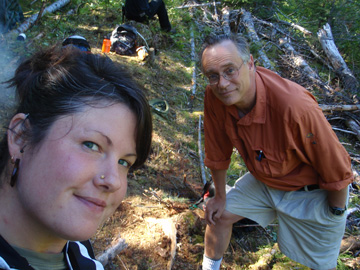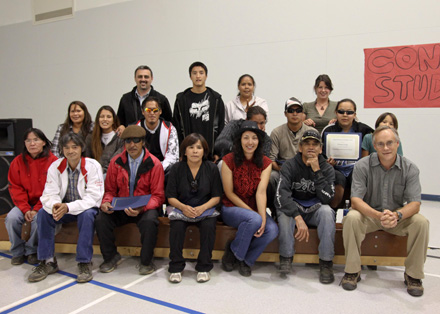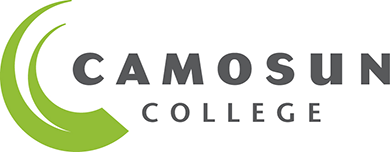Taking community college to the community
Archived Content
This archived web page remains online for reference, research or record-keeping purposes. This page will not be altered or updated and may contain out of date information. If you’re looking for specific information and haven’t found it, please contact communications@camosun.ca.
Camosun’s Archaeological Field Assistant program heads north
 |
| Instructors Lenore Thompson and Morley Eldridge |
October 22, 2009
Camosun College enthusiastically accepted the invitation to deliver its unique Archaeological Field Assistant program in the northern community of Tsay Keh Village. However, the project was not without its challenges.
In February 2009, BC Hydro contacted Nicole Kilburn, program chair, curriculum designer and instructor for Camosun’s Archaeology Field Assistant program, and asked if she could adapt the program for a group of Aboriginal students in the remote village of Tsay Keh, located on the northern tip of Williston Reservoir, a five hour drive north of Mackenzie, BC.
The Archaeological Field Assistant program teaches marketable field skills in an intense hands-on format. First offered in the spring of 2008, the program is normally delivered over four weekends, which includes two weekends off-campus visiting various local archaeology sites and participating in a short applied project. In addition to critical hands-on skills, the program teaches students about Aboriginal heritage management, artifact cataloguing and description, site identification, mapping and recording, basic study of local geology and plant communities, and safety in the field.
 |
| Grad class, instructors and community members. |
“I was thrilled with the invitation,” says Kilburn. “This was an opportunity to empower people with knowledge and skills so they can actively participate in the protection of their own culture and heritage. This is exactly what this program is all about.”
Camosun entered into a contract with the Tsay Keh Dene Band, who selected twelve students to take the course. BC Hydro was the main funding partner. “This was a unique opportunity to build the capacity with two First Nations, the Tsay Keh Dene and Kwadacha First Nation, to empower them to take greater control of the archaeological activities which BC Hydro undertakes around Williston Reservoir,” says Rod Hill, Aboriginal Relations Coordinator at BC Hydro, “The Camosun College program is uniquely designed for a First Nation audience and Camosun’s staff earned the respect of all involved for their ability to tailor the program to the unique needs of these communities.”
Redesigning the program to match the community’s needs
Recognizing that a program designed for a Victoria-based student body could not simply be transplanted into a remote community, Kilburn took on the challenge of redesigning the program to meet the needs of the Tsay Keh learners. Four major areas of the program needed to be adapted before the program could begin.
- Kilburn needed to incorporate cultural and archaeological references that were specifically relevant to the Peace River Valley and traditional lands of the Sekani Nation.
- Because Internet access was unreliable in the remote region, all the online readings had to be printed and shipped to Tsay Keh Village via bush plane.
- Some of the students did not have the literacy or numeracy skills required for the course curriculum, which normally requires English 12 as a prerequisite. Kilburn had to redesign the program for an oral delivery format, including alternate methods of evaluation.
- Normally students attend this program over four weekends, and have the week in between to study the material. To accommodate the need to fly in and house the two instructors, the program was condensed into two weeks. Students were not allowed to miss more than two hours from the entire nine-day program. This intensified the learning experience for everyone involved.
- Camosun hired two instructors who were familiar with the region and already known within the community. Morley Eldridge and Lenore Thompson were able to bring their personal experiences to the classroom, adding to the cultural relevance of the materials.
100% success rate
To achieve accreditation from the Archaeology Branch of BC, students needed a passing grade of 80% in a variety of applied skills and knowledge sets. All twelve students passed and received accreditation. Five passed with distinction!
To honour the students’ achievement, the whole community gathered for a special graduation ceremony, complete with food and speeches. A large banner summed up the community’s pride:
"Congratulations Archaeology Students—We Dig You!"
Last updated: October 22, 2009 10:33 am


